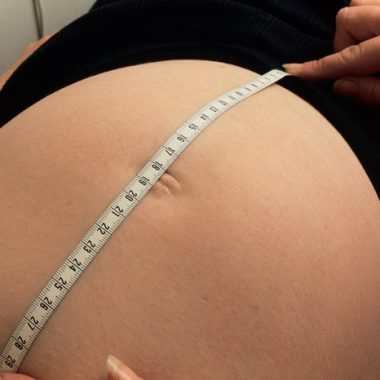NICE tests for gestational diabetes ‘could miss thousands of women with the condition’

Thousands of women could be left at risk of serious pregnancy complications if GPs rely on the new NICE criteria for diagnosing gestational diabetes, Cambridge University academics have claimed.
The team looked at records for over 25,000 births at a local hospital, and found that over a five-year period the NICE diagnostic criteria would have identified 126 fewer women with gestational diabetes when compared with criteria that are currently endorsed by the World Health Organisation (WHO).
These women were at much higher risk of poor pregnancy outcomes than the healthy population, including having a baby with a high birthweight, having an emergency Caesarian, and developing excessive amniotic fluid, the researchers reported in the journal Diabetologia.
The team said their findings suggest the NICE criteria would miss between 3,000 and 4,000 women who could benefit from treatment each year.
NICE recently advised GPs they should diagnose gestational diabetes in women with a fasting blood glucose level of 5.6mmol/L or above, or a 2-hour 75 g oral glucose tolerance test (OGTT) level of 7.8 mmol/L or higher.
Although this marked a lowering of their threshold for diagnoses, the NICE criteria are still less stringent than criteria from the International Association of the Diabetes and Pregnancy Study groups criteria that are endorsed by WHO, which recommend diagnosis based on fasting blood glucose of 5.1 mmol/L or above, or high OGTT at either one (10.0mmol/L or above) or two hours (8.5mmol/L) after the test.
Lead researcher Dr Claire Meek claimed the NICE guidelines emphasised costs of treatment too much.
Dr Meek said: ‘The international criteria are based on minimising the risk of harm to the mother and baby, whereas the NICE criteria have been based upon reducing costs to the NHS.’
Dr David Simmons from Cambridge University Hospitals said: ‘Doctors need to be aware that the new NICE criteria will miss high-risk women, especially those with borderline fasting blood sugar.’
Professor Mark Baker, director of clinical practice at NICE, said the WHO criteria ‘did not provide enough benefit’ to women they diagnosed, but said NICE would continue to keep the guidelines ‘under surveillance’.
Professor Baker said: ‘The expert NICE guideline development group undertook careful analysis with an economic model that showed the WHO 2013 criteria were not cost effective; their criteria did not provide enough benefit in relation to the increased costs.
‘In addition, the WHO recommendation was weak and the WHO noted that their 2013 criteria may need rapid revision as economic data becomes available. We welcome new research in this important area and will keep the guideline under surveillance.’
Diabetologia 2015; available online 11 June
Take Pulse’s June survey
Want to win a Samsung Smart HD TV? Then take Pulse’s multi-topic survey covering a range of areas affecting general practice.
It should take just a couple of minutes to complete, and will help Pulse gain a vital insight into the views of the profession.
Pulse October survey
Take our July 2025 survey to potentially win £1.000 worth of tokens

Visit Pulse Reference for details on 140 symptoms, including easily searchable symptoms and categories, offering you a free platform to check symptoms and receive potential diagnoses during consultations.




 Oviva’s fully remote Tier 3 Weight Management programme
Oviva’s fully remote Tier 3 Weight Management programme






